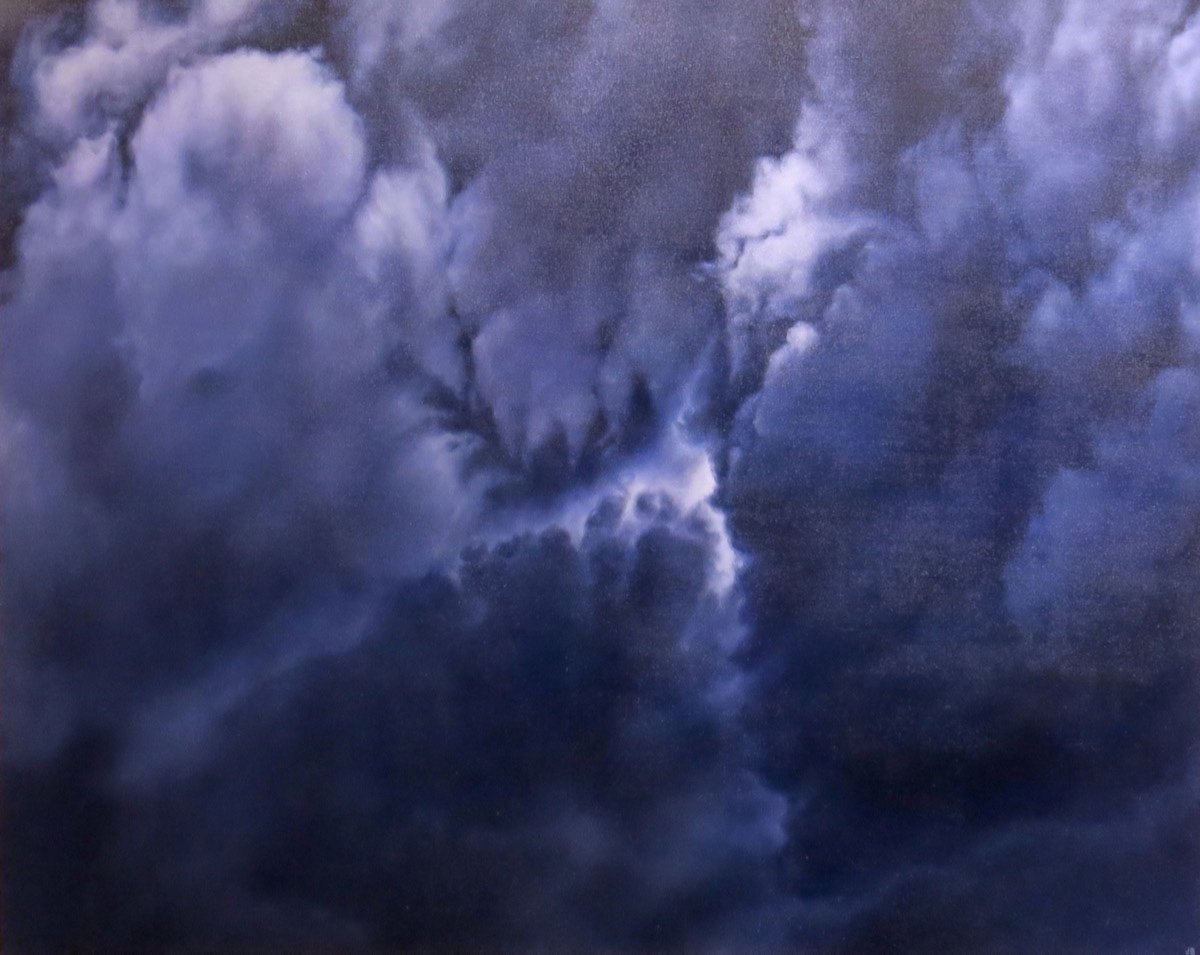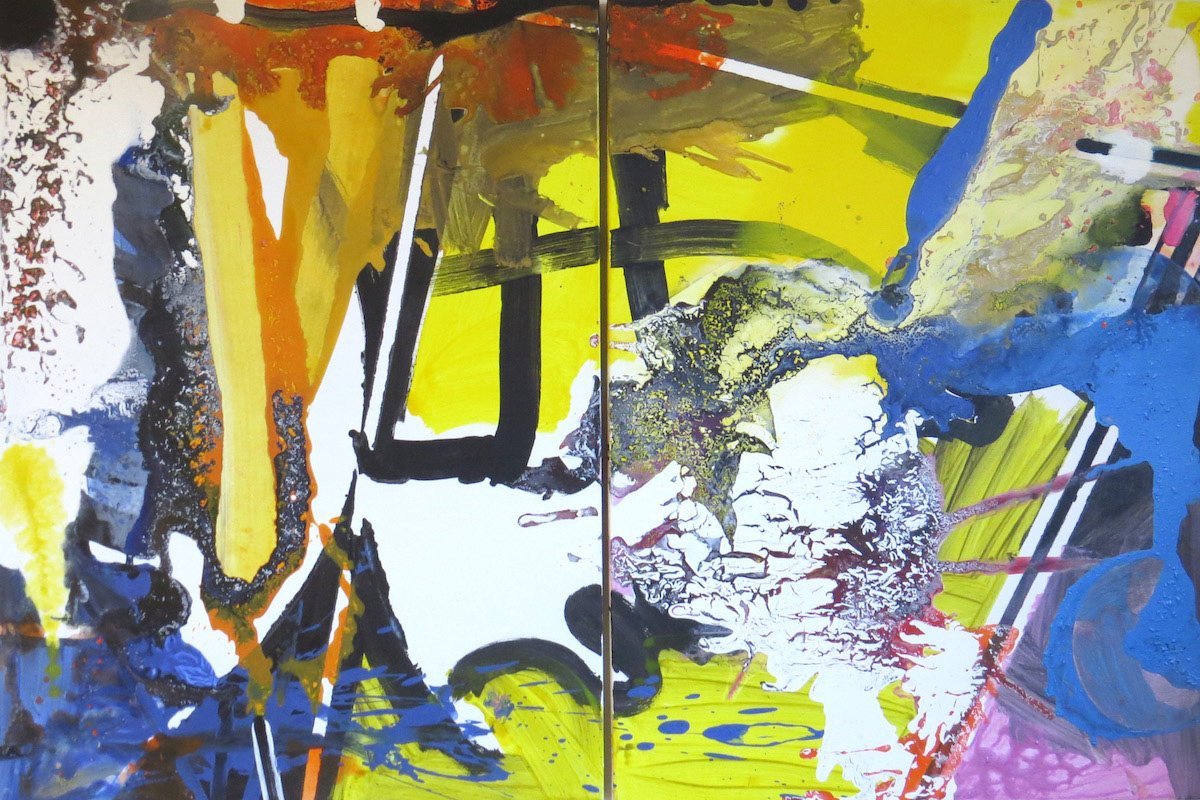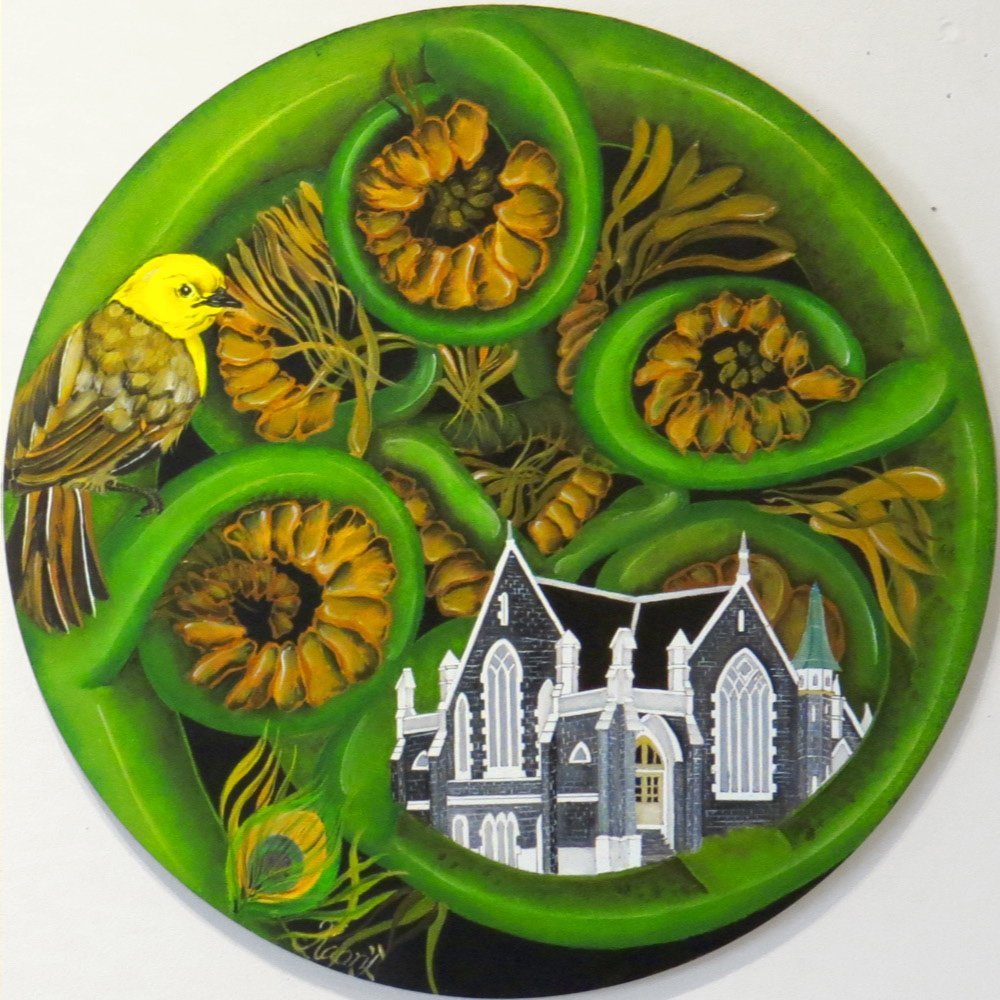
‘‘Dusk to Dawn”
Julie Battisti
(Gallery De Novo)
Musician Joni Mitchell once described clouds as flows of angel hair and feather canyons, and all those qualities are present in the beautiful skyscapes of Julie Battisti.
In a change from the artist’s previous studies of flowers, here she attempts to capture the immensity and ephemerality of cloudy skies, focusing on the crepuscular moments - dawn and dusk - when the blue of the sky deepens and the three-dimensionality of cloud is at its most apparent.
In this task, the artist has well succeeded, using the translucency of oil paint to build her paintings in multiple layers, capturing the light within the paintings in much the same way that it is captured in the veils of mist and vapour of which clouds are composed.
Battisti has emphasised the individuality of clouds by attaching human given names to each composition, imbuing each cloud with a personality.
Her occasional use of unusual canvas formats, especially the tall, thin canvases of Bertie and Beverly, has also allowed her to produce the perception of looking up towards the towering cumuli depicted.
The most surprising element of many of these works is the feeling of peace and warmth the images give, despite the clearly stormy nature of many of the skies shown.

"Fera Natura"
Philippa Blair
(Gallery Fe29)
‘‘Fera Natura’’ at Fe29 presents a series of abstract expressionist works by Philippa Blair.
Arranged in reverse chronological order, the exhibition displays a development of style which moves from such techniques as wiping paint with a squeegee to the incorporation of three-dimensional elements such as brushes and cable ties attached directly to the canvas.
The most recent work, largely in the form of multi-panelled paintings, includes deliberate crude blank lines, areas which have been masked off from the gestural application of paint.
Numerous techniques are used within each work, from squeezing paint directly on to the canvas to the use of a trowel to scrape away areas of paint.
There is a boldness to the images, and an almost cartographic feeling in many of the pieces, possibly in part due to the artist’s working practice of laying the canvas on the ground and working directly from above.
The paintings draw their inspiration from many sources, not the least of which is the work of the artist’s father, microbiologist Dr Ian Blair.
The revelations of the striated and globular patterns on microscope slides can be imagined as a starting point for many of the patterned panels in the artist’s work.
The freedom of both music and dance is also a strong influence. The artist compares her creative process to jazz improvisation, creating ‘‘visual rhythms’’ with ink drawings which underpin the finished works.

"Festival of Colours"
Kaori Jackson
(Koru Gallery)
Kaori Jackson’s ‘‘Festival of Colours’’ is a selection of paintings of native birds, plants, and Dunedin buildings, arranged in gentle, pleasing oil compositions.
Mixing both traditional and modern styles, the pieces draw on some of the compositional techniques of Jackson’s artistic Japanese lineage.
The completed works have a magic realist edge, with the birds often appearing as guardians to the buildings, nestling around them on boughs of native plants. The juxtaposition of the hard, straight edges of the buildings and the supple curved lines of the natural forms is particularly appealing in these images.
Several of these pieces, such as First Church, make good use of circular canvases, allowing the central building to float free as a focal point within a frame created by nature.
In other, more recent works, the buildings are absent, and the flora and fauna are presented against calm, dark backdrops.
These ‘‘Arrangements of Cyan and Teal’’ allow the eye to move directly to the birds and flowers without any of the bold distractions which more naturalistic surroundings might produce.
The backgrounds are far from monochromatic, however, shifting subtly between blacks and smoky midnight blues, adding a feeling of depth to the works, and almost implying the textural softness of old velvet painting.












